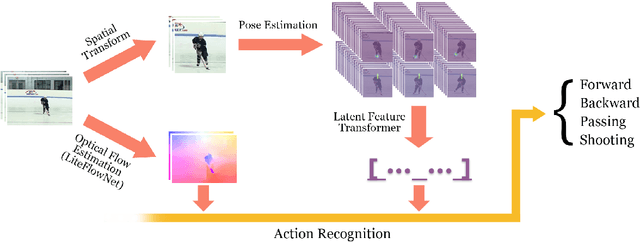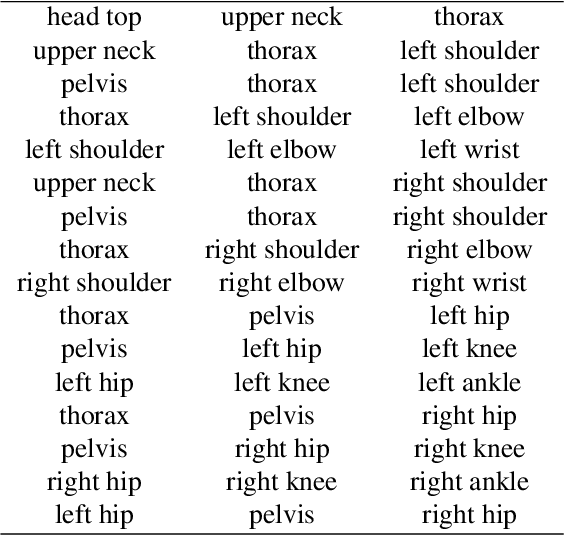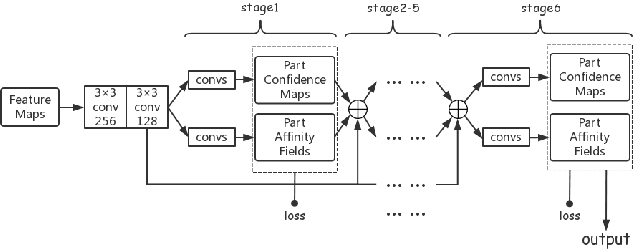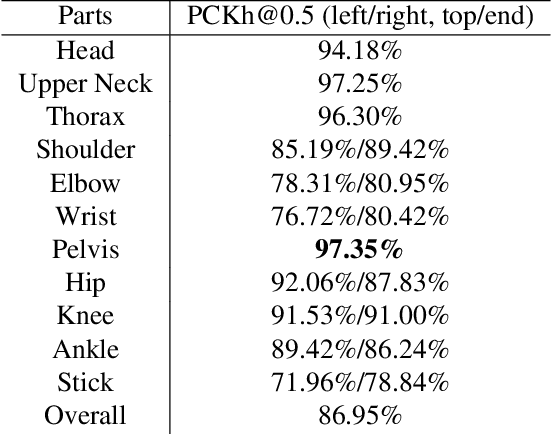Zixi Cai
Temporal Hockey Action Recognition via Pose and Optical Flows
Dec 22, 2018



Abstract:Recognizing actions in ice hockey using computer vision poses challenges due to bulky equipment and inadequate image quality. A novel two-stream framework has been designed to improve action recognition accuracy for hockey using three main components. First, pose is estimated via the Part Affinity Fields model to extract meaningful cues from the player. Second, optical flow (using LiteFlowNet) is used to extract temporal features. Third, pose and optical flow streams are fused and passed to fully-connected layers to estimate the hockey player's action. A novel publicly available dataset named HARPET (Hockey Action Recognition Pose Estimation, Temporal) was created, composed of sequences of annotated actions and pose of hockey players including their hockey sticks as an extension of human body pose. Three contributions are recognized. (1) The novel two-stream architecture achieves 85% action recognition accuracy, with the inclusion of optical flows increasing accuracy by about 10%. (2) The unique localization of hand-held objects (e.g., hockey sticks) as part of pose increases accuracy by about 13%. (3) For pose estimation, a bigger and more general dataset, MSCOCO, is successfully used for transfer learning to a smaller and more specific dataset, HARPET, achieving a PCKh of 87%.
Pose2Seg: Human Instance Segmentation Without Detection
Mar 28, 2018



Abstract:The general method of image instance segmentation is to perform the object detection first, and then segment the object from the detection bounding-box. More recently, deep learning methods like Mask R-CNN perform them jointly. However, little research takes into account the uniqueness of the "1human" category, which can be well defined by the pose skeleton. In this paper, we present a brand new pose-based instance segmentation framework for humans which separates instances based on human pose, not proposal region detection. We demonstrate that our pose-based framework can achieve similar accuracy to the detection-based approach, and can moreover better handle occlusion, which is the most challenging problem in the detection-based framework.
 Add to Chrome
Add to Chrome Add to Firefox
Add to Firefox Add to Edge
Add to Edge